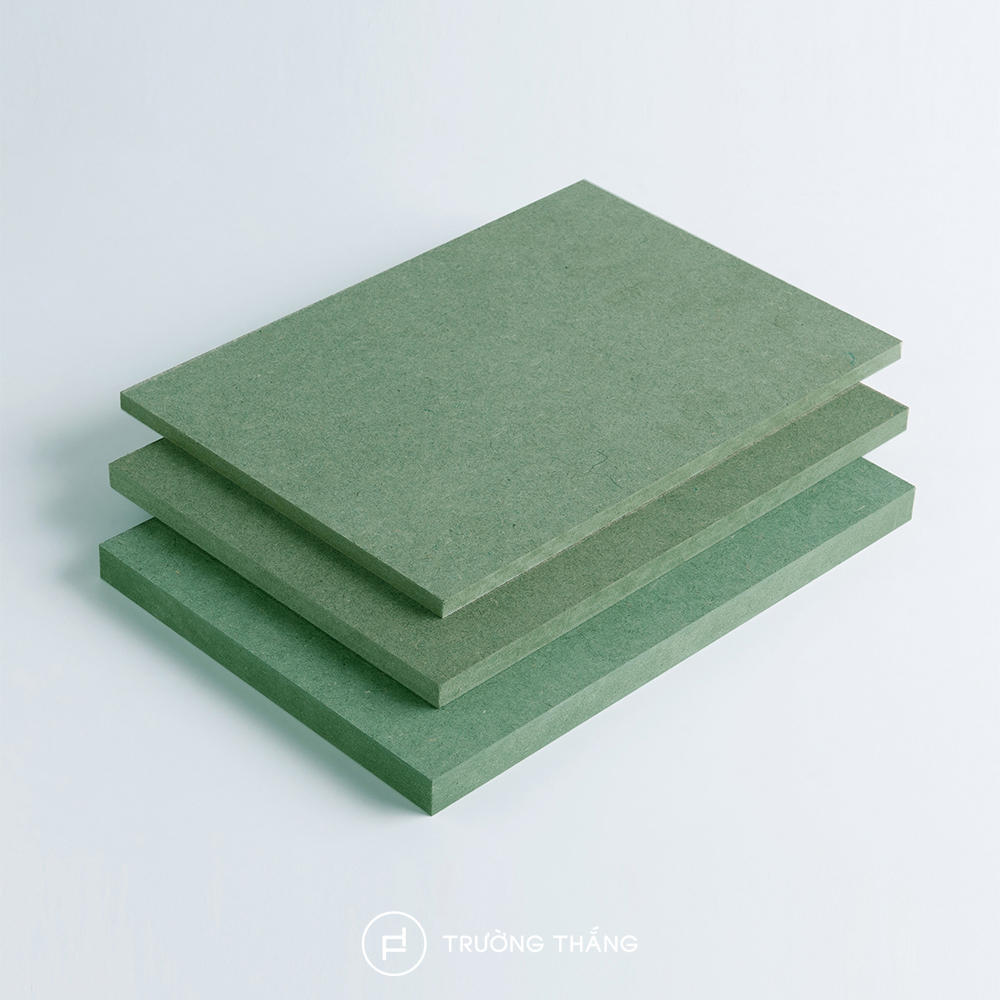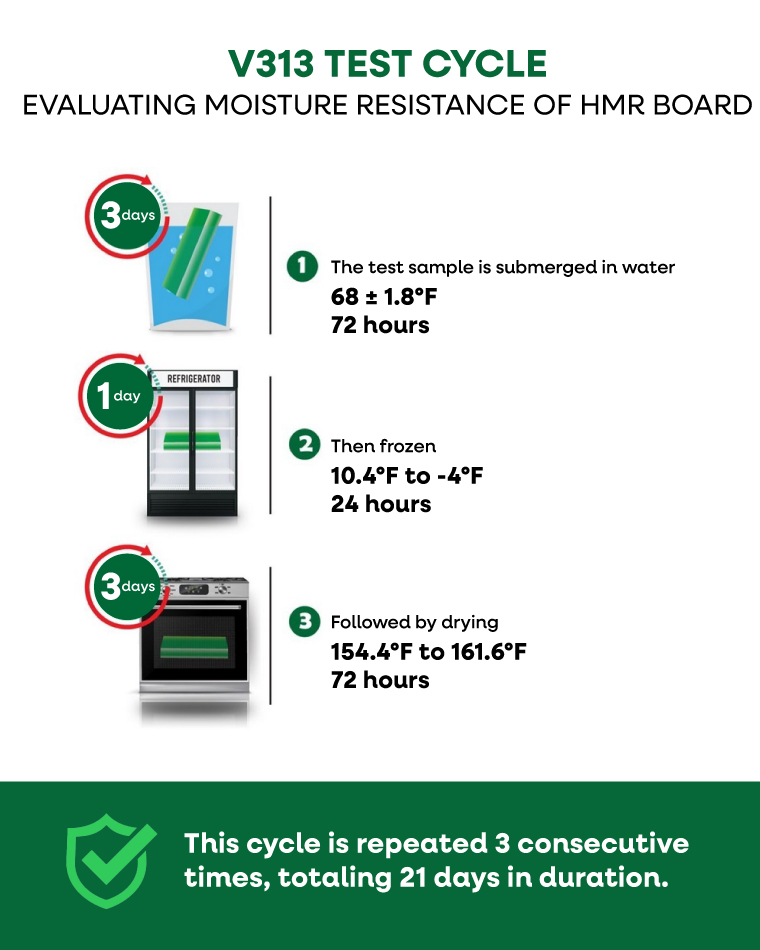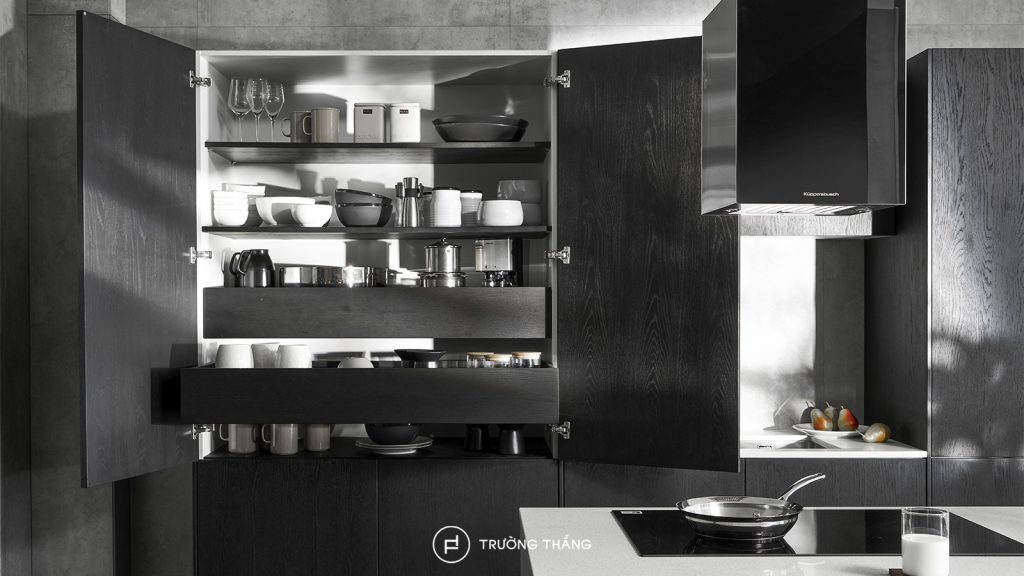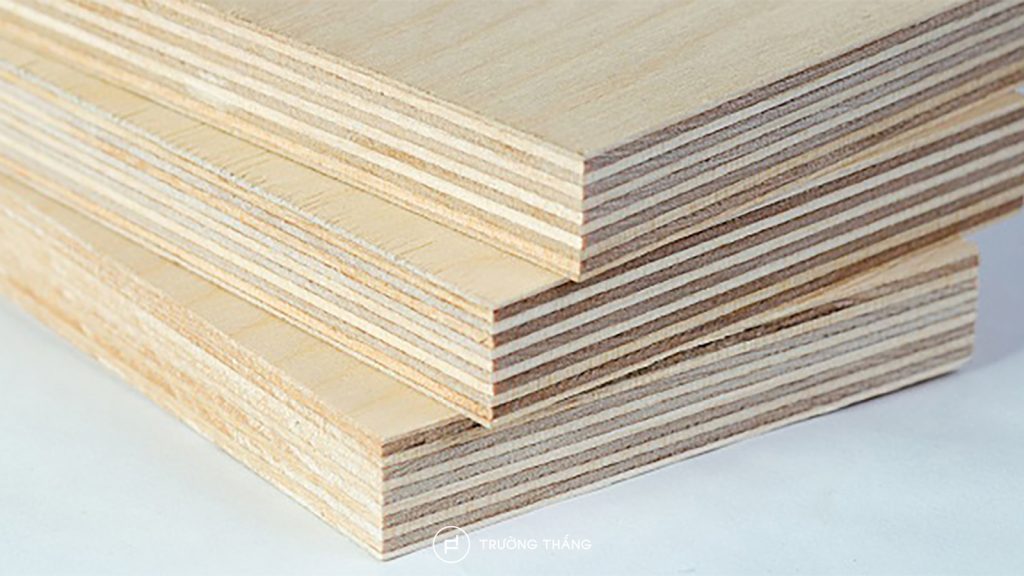
Luxury furniture isn’t just about what’s on the surface. The true quality lies in the inner construction, often hidden, yet clearly felt in every use. That’s where the cabinet box comes in: the structural core that defines stability, durability, and the lifespan of your entire storage system. Choosing cabinet box materials shouldn’t rely solely on price or durability. Each material has unique characteristics suited for different usage needs, technical requirements, and design directions. So which option is right for you?
Let’s explore three commonly used materials: HMR V313, Plywood, and Chipboard through the lens of functionality, aesthetic compatibility, and their ability to meet high-end furniture standards, as guided by Truong Thang’s expertise.

HMR V313 is a high-moisture-resistant MDF board, widely used in modern interior applications thanks to its reliable performance and technical adaptability.
Unlike standard MDF, HMR (High Moisture Resistance) features a light green core. This is a technical indicator of specialized adhesives and moisture-resistant additives used during manufacturing. This treatment enhances the board’s durability in humid environments, making it a smart and balanced solution for both visual appeal and long-term functionality.



Not suitable for components requiring high load-bearing capacity or curved shaping. In such cases, plywood or solid wood provides better structural integrity.
If you’re looking for a moisture-resistant cabinet carcass material that is easy to work with, dimensionally stable, and offers a good balance between aesthetics and cost — HMR V313 is a practical choice for most cabinet systems in modern interiors.

Plywood, also known as multi-layer engineered wood, is made from thin layers of natural wood veneer stacked crosswise and bonded with specialized adhesives under high temperature and pressure. This structure not only provides excellent load-bearing capacity but also minimizes warping and shrinkage caused by changes in humidity and temperature.
In cabinets that demand strong structure, excellent screw retention, and long-term warp resistance such as hanging kitchen units, large cabinet systems, or in-site installations with fluctuating climate – plywood is a reliable choice. Though more expensive, it delivers superior technical performance and long-term durability.
Chipboard (also known as particle board) is an engineered wood product made by compressing wood chips or small wood particles with resin under high temperature. Thanks to its porous and lightweight structure, chipboard helps reduce cabinet weight and provides decent sound insulation compared to denser boards like MDF or plywood.

With advanrages in cost-efficiency, weight, and ease of installation, chipboard is a suitable material for lightweight upper cabinets, bookshelves, decorative units, or office furniture. In dry, low-impact environments, it provides a practical and budget-friendly solution that’s easy to work with.
| CRITERIA | HMR V313 | PLYWOOD | CHIPBOARD |
| Moisture resistance | Excellent – V313-certified, stable in humid environments | Good – depends on adhesive type (WBP glue provides higher resistance) | Acceptable with moisture-resistant core and good adhesive |
| Structural stability | Good – minimal warping or shrinkage | Very high – strong load capacity, ideal for wall-mounted cabinets | Moderate – not recommended for heavy-load structures |
| Screw-holding strength | Average – requires proper hardware and installation technique | Excellent – suitable for hinges, slides, and heavy-duty fittings | Low – screws may loosen over time in frequently used areas |
| Surface finish quality | Smooth – ideal for veneer, laminate, or PU paint finish | Rougher – needs extra preparation for high-end finishes | Stable – suitable for laminate or melamine finishes |
| Weight | Medium – suitable for most cabinet structures | Medium-light – reduces load, easier to install | Light – convenient for moderate load-bearing applications |
| Curved shaping | Limited | Limited | Possible – depending on type and thickness |
| Termite resistance | Good – along with industrial adhesives and treatment | Poor – prone to termite damage if untreated | Good – with treated water-resistant core and termite-proof adhesives |
| Cost | ★★★ | ★★★★ | ★★ |
| Recommended applications | Base kitchen cabinets, bathroom vanities, built-ins, wardrobes by damp walls | Premium kitchens, large cabinets, wall-mounted systems | Lightweight upper cabinets, shelving units, office furniture in dry conditions |
Choosing the right cabinet core material is not just a technical decision — it’s a long-term consideration of quality of life, everyday functionality, and aesthetic durability. If you’re in the process of designing or upgrading your cabinetry, visit a Truong Thang showroom to experience each material firsthand and find the most suitable solution.
Here, our experienced consultants will assist you in:

Founded in 2004, Truong Thang has been driven by the vision of building a premium, sustainable interior ecosystem. We are committed to delivering high-quality products that are safe for your health. At the same time, our solutions are tailored to the needs and lifestyle of Vietnamese families.
If you’re looking for interior design and build solutions for your home, Truong Thang is a trusted choice. We offer products crafted from premium materials, with refined design and flexible application across various styles and modern living spaces.